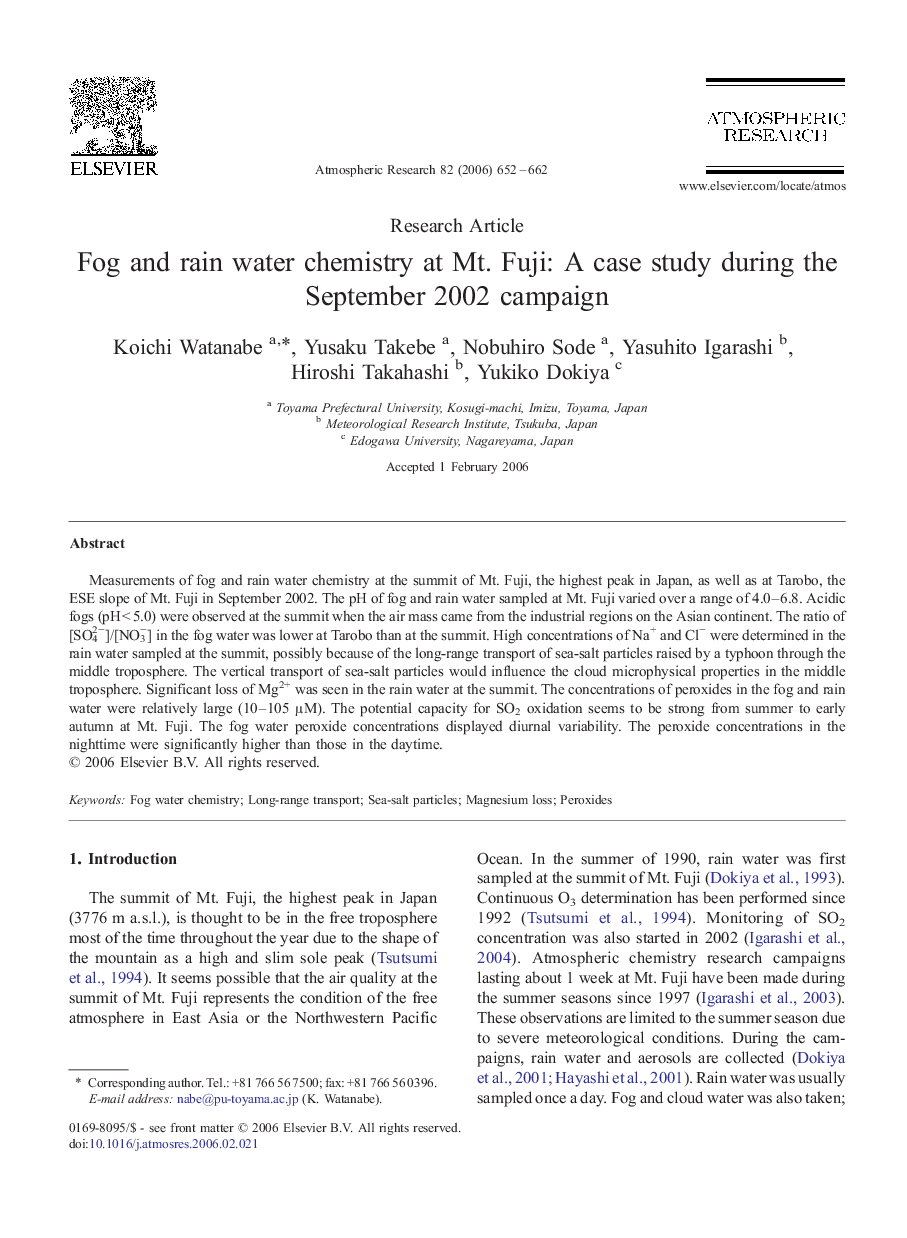| Article ID | Journal | Published Year | Pages | File Type |
|---|---|---|---|---|
| 4451518 | Atmospheric Research | 2006 | 11 Pages |
Measurements of fog and rain water chemistry at the summit of Mt. Fuji, the highest peak in Japan, as well as at Tarobo, the ESE slope of Mt. Fuji in September 2002. The pH of fog and rain water sampled at Mt. Fuji varied over a range of 4.0–6.8. Acidic fogs (pH < 5.0) were observed at the summit when the air mass came from the industrial regions on the Asian continent. The ratio of [SO42−]/[NO3−] in the fog water was lower at Tarobo than at the summit. High concentrations of Na+ and Cl− were determined in the rain water sampled at the summit, possibly because of the long-range transport of sea-salt particles raised by a typhoon through the middle troposphere. The vertical transport of sea-salt particles would influence the cloud microphysical properties in the middle troposphere. Significant loss of Mg2+ was seen in the rain water at the summit. The concentrations of peroxides in the fog and rain water were relatively large (10–105 μM). The potential capacity for SO2 oxidation seems to be strong from summer to early autumn at Mt. Fuji. The fog water peroxide concentrations displayed diurnal variability. The peroxide concentrations in the nighttime were significantly higher than those in the daytime.
